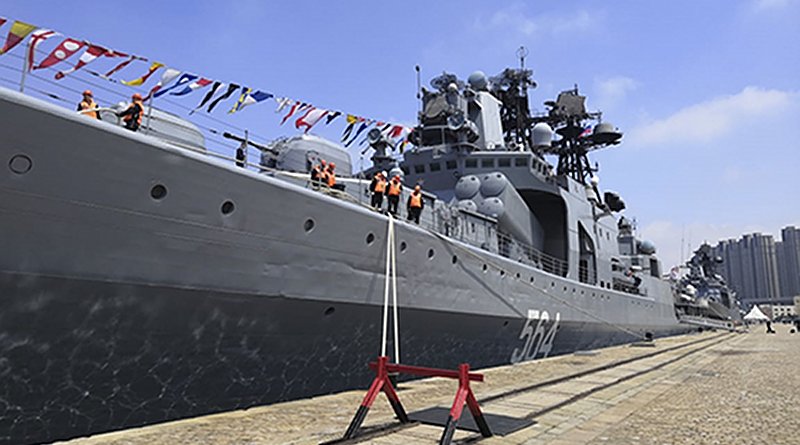Chinese-Russian Naval Cooperation On The Rise – Analysis
China and Russia are both modernizing their naval power and projecting their naval and maritime interests in new ways. The two countries have announced a further opening of the Arctic sea route in terms of trade and security; they conduct joint maritime exercises in the Pacific that involve the sharing of naval strategy; they are both present in the Mediterranean and beyond; and are also involved in anti-piracy operations. Taken together, is there a strategic nexus for the Chinese and Russian navies?
Both China and Russia maintain naval power to support their respective national interests and protect their national security from seaborne threats. Both navies are, in theory, needed to quickly respond to changing geopolitical needs, as well as to maintain a presence in areas of national interest, such as the Arctic.
Russia’s ability to project naval power globally is questionable, but its ability to project power regionally comes through multiple combat operations and operational deployments in a variety of waters, including the Mediterranean Sea. Limited operations to the Caribbean Sea and South America and an ability to “show the flag” do not prove a power projection capability. Chinese ports of call in Latin America have been ongoing for at least a dozen years.
It is important to remember that Chinese and Russian naval activity is not limited to direct military action and capabilities. It is also intended to support public, economic and regional security, as well as the development of technology. Their actions bring capabilities to the fights against terrorism and piracy, support both Chinese and Russian maritime resource protection, and are used to show a security presence in areas both countries deem perennially important.
Chinese and Russian naval expansion appears to be assertive and, with growing cooperation on a host of security issues across Eurasia, Latin America and Africa, the two countries may find themselves more closely joined than they appear. The ability for both countries to practice “jointness” is becoming increasingly evident in terms of strategic thinking. They appear to be conducting more cross-service cooperation in various stages of the military process, from research through procurement and into exercises and operations.
This Chinese-Russian ability to operate together, which is already being practiced in the Pacific Ocean through major joint maritime exercises, is likely to be transferred into a more far-reaching cooperation on projecting maritime security. Looking at Chinese and Russian arms production and design reveals similarities between the two countries. Nowadays, both China and Russia are busy with advances in the Arctic and several key hubs in Africa. It is highly likely that, in a maritime emergency or catastrophe, both navies would have an immediate presence.
China is taking a wide range of destabilizing actions that position Beijing on a global scale. More than 300 surface ships and 66 submarines make for a large navy with advanced electronics and projection capabilities, especially after 2030, when the People’s Liberation Army Navy fleet will grow beyond 500 surface ships and 100 submarines.
Thus, an advanced navy is taking shape. It will be more advanced and deployable in new ways within a few years, enhancing Chinese naval capabilities to include the construction of naval air stations in the South China Sea within the Philippines’ exclusive economic zone. The declaration of an air defense identification zone in the East China Sea near Japan, its claims of sovereignty over the Senkaku Islands, and Beijing’s rejection of the authority of the Permanent Court of Arbitration — the world’s longest-standing international law arbitration body — show China’s concept of sovereignty at sea. These Chinese actions match Russia’s strategic desires in terms of concepts of sovereignty and the need for a strategic presence. Here the marriage of Beijing and Moscow in terms of a global strategy is consummated because maritime lanes are key to the continued growth of these two countries’ strength in pulling other countries to the east.
The mix of matching geostrategic interests, belief in reach and influence, and their interests across continents are merging over time. The Belt and Road Initiative, the Asian Infrastructure Investment Bank, the Shanghai Cooperation Organisation, and BRICS links are continuing to tighten cooperation between the two countries. This process of cooperation drives maritime requirements, given the ties between logistics and connectivity that help to build up both countries’ future. The national security concepts of both China and Russia are merging out of shared interests. Moscow’s ability to conduct operations through “jointness” with Beijing is on the horizon.

